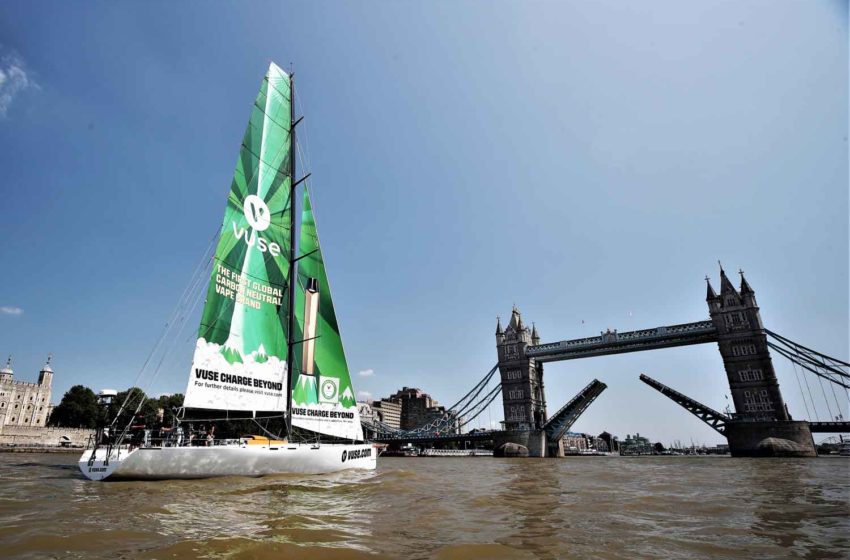
BAT wants to become carbon neutral across its value chain by 2050.
By Stefanie Rossel
For the environment, tobacco production is a damaging business. In 2014, global cigarette manufacturing was responsible for 84 million tons, or 0.2 percent, of the world’s carbon dioxide (CO2) emissions, according to a study by Imperial College. Eager to minimize their impact, tobacco companies have been working hard to reduce their carbon footprint.
BAT, for one, aims for carbon neutral operations by 2030 and a “net-zero” value chain by 2050. The company signed up for the United Nations-backed Race to Zero global campaign, an initiative to halve global emissions by 2030 and achieve net-zero carbon emissions by 2050. As part of this, BAT has committed itself to realigning its existing carbon neutral targets, which were previously based on the 2015 Paris Agreement to limit the global average temperature rise to 2 degrees Celsius, to match the new consensus that the temperature rise should be limited 1.5 degrees Celsius to avoid severe climate change effects on people, wildlife and ecosystems.
In 2020, BAT’s emissions totaled to 6.11 million tons of CO2 equivalent (CO2e), according to the company’s ESG Report 2021. The company’s own operations, however, contributed a mere 9 percent of its total 2020 emissions footprint. The remainder were “Scope 3” emissions—indirect emissions from resources that the organization does not own.
Seventy-six percent of Scope 3 emissions came from the company’s upstream value chain, including 32 percent from tobacco growing (fertilizers, curing barns, farm machinery, etc.) and 22 percent from materials. Another 15 percent emerged from BAT’s downstream value chain, 10 percent of which were produced by the use of sold products and 5 percent by their end-of-life treatment.
BAT is tackling the emissions of both its own operations and its wider value chain. To decarbonize its operations, the company continues to expand its renewable energy sourcing. Across its manufacturing sites, it is identifying opportunities to reduce CO2e emissions through decarbonization assessments and value stream mapping. Internal carbon pricing has been incorporated into the company’s business plans since 2021 to ensure that the impact on environmental performance and targets is formally considered and quantified.
A Cure for Curing
By generating solar power on-site and purchasing green electricity, BAT aims to expand its number of carbon neutral sites. Of BAT’s 75 manufacturing facilities, 32 were sourcing 100 percent renewable electricity by the end of last year while 19 sites were producing renewable energy on the spot. Combined, the company says, these measures have reduced CO2 emissions to 42.7 percent of CO2e from its 2017 baseline. Renewable sources currently account for 28.6 percent of BAT’s total energy consumption. The company aims to achieve 100 percent by 2030.
Reducing emissions in its tobacco supply chain, where about a third of BAT’s Scope 3 carbon emissions are generated, is a tougher nut to crack. Most of these emissions come from tobacco curing. Although more than 80 percent of BAT’s annual leaf volumes are cured using renewable fuels, sustainable wood, biomass or sun curing, the problem of emissions persists.
The company sources approximately 61 percent of its tobacco leaf from its own operations in 18 countries, which contract directly with more than 75,000 farmers. The company’s remaining leaf comes from third-party suppliers in 26 countries that contract with over 264,000 farmers.
In several countries, BAT has introduced fuel-efficient curing technologies, among them new types of curing barns that enable at least a 30 percent reduction in fuel use and a 14 percent reduction in electricity use. For the tobacco volumes it purchases, the company aims to eliminate the use of coal as a curing fuel. Coal-cured leaf presently accounts for 10 percent of the tobacco that BAT sources through third-party suppliers.
To further determine the best combination of curing technologies and fuel types for reducing emissions, the company started trials in six countries in 2021. Its global leaf agronomy center in Brazil is identifying startups to help develop new technologies and practices that support carbon-smart farming.
Planting trees and cover crops and practicing conservation tillage not only keep the soil covered and store carbon but they may also increase water retention capacity, improving drainage and making the soil more fertile, which in turn will lead to increased yields and better quality crops. BAT is currently working with a specialist consultancy to validate its approach and verify the results. The company started testing its carbon-smart farming program with 35 farmers in Brazil last year and intends to expand the pilot to Bangladesh, Mexico and Pakistan in 2022.
Making Products More Sustainable
Product materials account for around 59 percent of BAT’s Scope 3 emissions, 15 percent of which are generated by the company’s 30 largest direct suppliers across more than 100 sites. An assessment showed that most suppliers were only in the early stages of decarbonization. To enable suppliers to align with its net zero target, BAT provides support and technical assistance and continues to track progress.
To include end products in its sustainability ambitions, BAT has implemented a company-wide circular economy. Through life-cycle analysis across its product categories, the company has identified key areas that can contribute to reducing Scope 3 emissions, including the optimization of product design and shipping goods by sea instead of air where possible. Underlining its environmental commitment, BAT in 2021 announced that its Vuse e-cigarette had become the first global carbon neutral vape brand.


